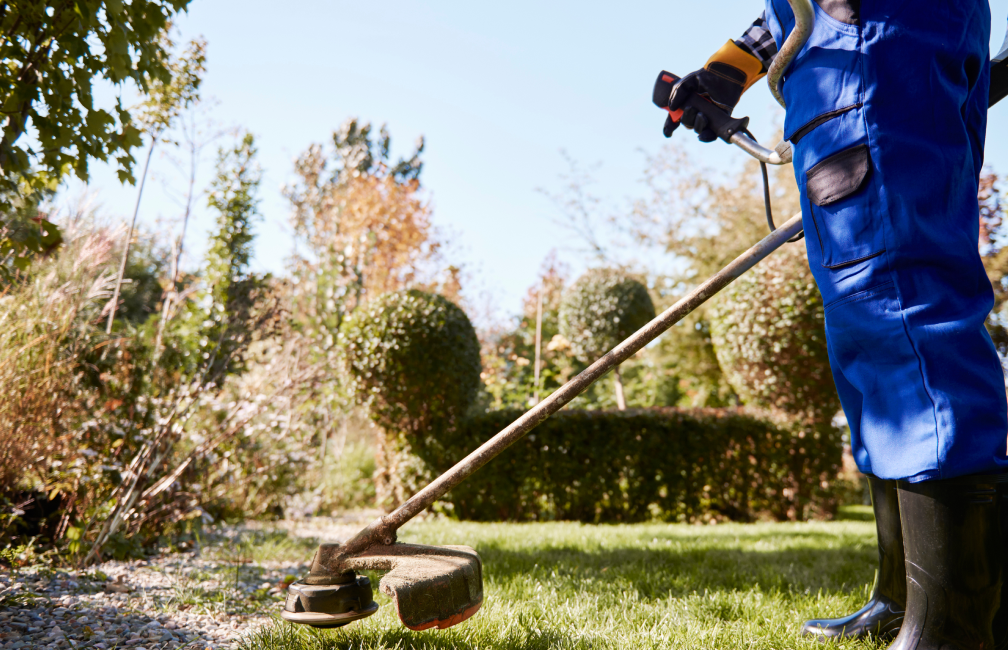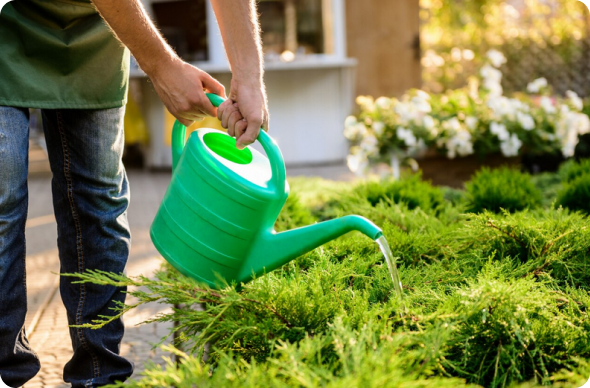
Natick Dethatching Lawn Services
Choose our professional dethatching services to restore your lawn’s health, improve grass growth, and ensure a lush, vibrant yard all season long.
Get a Free QuoteWhen to Schedule Dethatching Lawn in Natick, MA – Seasonal Guide
In Natick, MA, the best time to schedule lawn dethatching is typically in early spring or early fall, when grass is actively growing and can recover quickly. The region’s climate—with its cold winters, humid summers, and variable precipitation—means timing is crucial for optimal results. For neighborhoods near Dug Pond or along the Charles River, where soil can remain damp longer, waiting until the ground is firm and frost-free is essential. Conversely, areas with dense shade from mature maples in Walnut Hill may require a slightly later start to ensure the soil has warmed sufficiently.
Local environmental factors such as late spring frosts, summer drought risk, and the prevalence of clay-heavy soils in South Natick all play a role in determining the ideal dethatching window. Homeowners should also consider municipal guidelines and seasonal updates from the Town of Natick to avoid conflicts with local restrictions or community events.
Local Factors to Consider for Dethatching Lawn in Natick
- Tree density and shade coverage, especially in older neighborhoods
- Soil type (clay, loam, or sandy soils affect recovery time)
- Recent precipitation and ground moisture levels
- Proximity to water bodies like Dug Pond or the Charles River
- Municipal restrictions or scheduled community maintenance
- Terrain slope and drainage patterns
- Timing of last frost and risk of late cold snaps
Benefits of Dethatching Lawn in Natick

Improved Lawn Health
Enhanced Grass Growth
Increased Water Absorption
Reduced Pest and Disease Risk
Boosted Curb Appeal
Professional Landscaping Expertise

Natick Dethatching Lawn Types
Cool-Season Grasses
Warm-Season Grasses
Fescue Lawns
Kentucky Bluegrass Lawns
Ryegrass Lawns
Zoysia Lawns
Bermuda Grass Lawns
Our Dethatching Lawn Process
Lawn Evaluation
Preparation and Marking
Dethatching
Cleanup and Disposal
Post-Dethatching Inspection
Why Choose Natick Landscape Services

Natick Homeowners Trust Us
Comprehensive Lawn Maintenance
Reliable Seasonal Cleanups
Expert Tree and Shrub Care
Efficient Snow Removal
Competitive Pricing
Satisfaction Guarantee
Contact Natick's Department of Public Works for Dethatched Material Disposal & Yard Waste Collection
Natick residents benefit from well-coordinated yard debris management systems that accommodate the town's intensive spring and fall lawn renovation cycles. Municipal waste operations provide seasonal collection programs and convenient drop-off facilities specifically calibrated to handle peak dethatching volumes across this MetroWest lake community.
Natick Department of Public Works
75 West Street, Natick, MA 01760
Phone: (508) 647-6550
Official Website: Natick Department of Public Works
Successful organic material processing requires residents to follow established preparation protocols that support municipal composting objectives:
- Contain all yard debris in approved biodegradable paper bags or designated containers; synthetic packaging disrupts composting operations and violates state organic waste standards
- Eliminate contaminating materials including stones, soil chunks, construction remnants, and non-organic refuse that damage processing machinery
- Respect published weight limits and container dimensions for both roadside pickup and Transfer Station delivery
- Review municipal notifications for collection date adjustments during weather events and seasonal peak periods
- Arrange materials to maintain pedestrian access and avoid blocking storm water infrastructure
Understanding Thatch Buildup in Natick's Glacial Lakebed & Suburban Development Conditions
Natick's formation within ancient glacial Lake Sudbury creates distinctive substrate conditions that profoundly affect organic matter accumulation across residential landscapes. USDA Web Soil Survey documentation identifies varied formations including Merrimac and Sudbury sandy loams from former lakebed deposits, well-drained Paxton and Charlton fine sandy loams on glacial till uplands, and Hinckley-Windsor sandy complexes along outwash terraces surrounding Lake Cochituate.
University of Massachusetts Extension Center for Agriculture, Food and the Environment
161 Holdsworth Way, Amherst, MA 01003
Phone: (413) 545-2717
Official Website: University of Massachusetts Extension
Lake proximity generates elevated moisture levels that can impede natural decomposition while accelerating grass growth and debris production. Suburban development has introduced compacted substrates throughout residential areas, limiting oxygen circulation essential for beneficial soil organisms. Former lakebed soils experience rapid drainage that may restrict microbial activity during drought periods, while compacted glacial till areas develop oxygen-poor conditions that suppress organic matter breakdown.
Properties experiencing thatch accumulation beyond the recommended 0.5-inch depth develop cascading issues including impaired water absorption, restricted root growth, and heightened disease vulnerability. Homeowners should monitor for springy surface texture, water beading during irrigation, patchy fertilizer response, and moss expansion as indicators requiring intervention.
Key practices for managing thatch in Natick's conditions include:
- Timing operations during active growth windows in late spring or early autumn when lake humidity facilitates rapid turf recovery
- Pairing with cultivation services to address compaction endemic to suburban foot traffic and construction activities
- Choosing grass cultivars adapted to lakebed soil drainage patterns and seasonal moisture variations
- Moderating fertilization programs to prevent excessive growth in fertile former lakebed substrates
- Installing protective ground cover immediately following dethatching using varieties suited to Natick's lake district environment
Reference: USDA Web Soil Survey
Natick Conservation Commission Requirements for Dethatching Near Wetlands & Protected Areas
Natick's extensive aquatic resources and conservation holdings necessitate careful environmental planning for lawn maintenance throughout this lake-centered community. The Massachusetts Wetlands Protection Act establishes protective buffer zones extending 100 feet from wetland boundaries and 200 feet from waterways, affecting properties near Lake Cochituate, Charles River frontage, Dug Pond, and interconnected tributary networks that characterize much of the town's landscape.
Natick Conservation Commission
13 East Central Street, Natick, MA 01760
Phone: (508) 647-6450
Official Website: Natick Conservation Commission
Wildlife protection requirements intensify during April through July breeding periods when diverse species utilize lake shorelines, river corridors, and wetland margins throughout Natick's developed areas. Properties bordering conservation lands, recreational facilities with natural features, or educational campuses near water bodies must implement immediate soil stabilization preventing erosion into sensitive aquatic habitats supporting both recreation and ecological functions.
Substantial dethatching within regulated zones typically requires environmental review through Request for Determination of Applicability or Notice of Intent procedures. Manual methods and gentle scarification techniques are recommended near lake shores and stream corridors to minimize ground disturbance while protecting aquatic resource integrity essential to Natick's lake community character.
Natick's Implementation of Massachusetts Organic Waste Regulations for Dethatched Material
State mandates under Massachusetts General Law Chapter 111, Section 150A prohibit organic waste disposal through household refuse collection, requiring Natick to establish alternative processing pathways for lawn debris. The town operates comprehensive diversion programs accommodating both individual property needs and community-wide sustainability goals throughout this suburban lake district.
Massachusetts Department of Environmental Protection
One Winter Street, Boston, MA 02108
Phone: (617) 292-5500
Official Website: Massachusetts Department of Environmental Protection
Massachusetts Department of Agricultural Resources
251 Causeway Street, Suite 500, Boston, MA 02114
Phone: (617) 626-1700
Official Website: Massachusetts Department of Agricultural Resources
Residential composting provides excellent processing opportunities where property layouts permit appropriate siting away from lake systems and neighboring homes. Backyard operations must maintain adequate distances from Lake Cochituate watersheds, Charles River tributaries, and property boundaries while preventing nutrient migration through proper management techniques.
Municipal collection operates year-round with expanded capacity during optimal maintenance periods, ensuring Massachusetts General Law Chapter 111, Section 150A compliance through regional processing partnerships. Biodegradable container requirements support composting effectiveness while reducing contamination. Additional guidance from the Massachusetts Department of Agricultural Resources addresses sustainable organic waste practices appropriate for lake communities.
Post-Dethatching Stormwater Management in Compliance with Natick's MS4 Program
Natick's Municipal Separate Storm Sewer System obligations emphasize Lake Cochituate and Charles River protection through rigorous pollution prevention during soil-disturbing activities. National Pollutant Discharge Elimination System standards mandate immediate stabilization of exposed areas preventing sediment and nutrient migration into recreational waters and aquatic habitats throughout the lake district.
U.S. Environmental Protection Agency, Region 1
5 Post Office Square, Suite 100, Boston, MA 02109
Phone: (617) 918-1111
Official Website: U.S. Environmental Protection Agency, Region 1
Weather monitoring becomes critical for lake protection compliance, requiring work suspension when precipitation threatens within 24 hours. Property owners should consult National Weather Service Boston forecasts before initiating soil disturbance activities. Post-dethatching stabilization protocols include:
- Rapid ground cover establishment within 24 hours using grass varieties adapted to lakebed soil conditions and seasonal moisture patterns
- Conservative nutrient application preventing excess loading that contributes to lake contamination and algal bloom development
- Controlled irrigation supporting establishment while preventing runoff into Natick's lake systems and storm drainage network
- Coordinated soil enhancement addressing compaction from suburban activities and high-density development
- Temporary erosion barriers on slopes and lakefront areas vulnerable to storm-related sediment loss
These practices ensure Clean Water Act and EPA NPDES compliance while supporting turf recovery in Natick's challenging lake district environment.
What Neighborhoods Do We Serve Throughout Natick, MA?
Natick's residential districts present varied thatch management challenges reflecting diverse lake proximity, development histories, and environmental conditions throughout this MetroWest suburban community.
Natick Center Village Core encompasses traditional civic areas with mature shade trees and potentially compacted substrates from decades of community activities. Limited growing space between historic buildings creates challenging light conditions while established infrastructure often restricts equipment access, requiring specialized manual techniques and compact machinery for effective maintenance.
Lake Cochituate Waterfront Estates include premium residential properties with direct lake access experiencing distinctive growing conditions from water proximity and recreational use patterns. Enhanced humidity levels from lake influence affect decomposition rates while strict watershed protection requirements demand careful nutrient management and erosion prevention during all maintenance activities.
South Natick Charles River District encompasses development along river corridors with alluvial soils and elevated water tables creating seasonal saturation issues. Properties experience unique moisture patterns from river influence while environmental compliance requirements mandate enhanced buffer zone protection and sediment control measures.
West Natick Suburban Subdivisions feature post-war residential development with engineered soils and modern drainage infrastructure. Construction-related compaction remains prevalent throughout these neighborhoods, requiring combined dethatching and aeration services while coordinating with underground utility networks and established landscaping systems.
North Natick Conservation Interface includes properties adjacent to conservation lands and recreational facilities with challenging growing conditions from forest proximity and shade influence. Heavy organic matter input from adjacent woodlands accelerates thatch formation while environmental compliance requires low-impact techniques and careful timing coordination.
East Natick Commercial Transition Zone encompasses mixed residential areas near Route 9 commercial development with altered soil conditions from infrastructure activities. Properties may experience enhanced compaction and modified drainage requiring specialized soil improvement approaches and coordination with commercial facility maintenance schedules.
Sherwood Forest Residential Enclave features established neighborhoods with mature tree canopy creating acidic soil conditions and extensive shade challenges. Continuous leaf drop and reduced sunlight favor moss development over healthy turf, requiring specialized shade-tolerant varieties and conservative maintenance approaches for successful establishment.
Natick Municipal Bylaws for Landscaping Operations & Equipment Use
Municipal ordinances governing landscaping operations establish operational standards balancing professional service access with neighborhood tranquility throughout Natick's suburban lake community. These regulations ensure environmental stewardship while maintaining access to essential lawn care services during complex lake district management requirements.
Natick Building Department
13 East Central Street, Natick, MA 01760
Phone: (508) 647-6470
Official Website: Natick Building Department
Natick Board of Health
13 East Central Street, Natick, MA 01760
Phone: (508) 647-6460
Official Website: Natick Board of Health
Noise regulations establish specific working hours balancing service efficiency with residential peace, particularly near schools and lake recreation areas where quiet periods support educational and wildlife activities. Commercial operators must maintain appropriate insurance coverage reflecting suburban property values while demonstrating environmental compliance capabilities for lake watershed protection.
Equipment standards address suburban infrastructure challenges including utility coordination, storm drainage protection, and coordination with recreational facility management. Service providers must demonstrate competency in lakebed soil management while maintaining effective thatch removal capabilities in diverse suburban substrates and conservation interface conditions.
Major dethatching projects near sensitive lake systems or conservation areas typically require coordination with Conservation Commission oversight ensuring watershed protection compliance. Professional operators must maintain current training in lake district environmental best management practices while ensuring successful turf establishment in Natick's complex suburban lake environment with its integrated recreational demands and sophisticated environmental protection requirements.